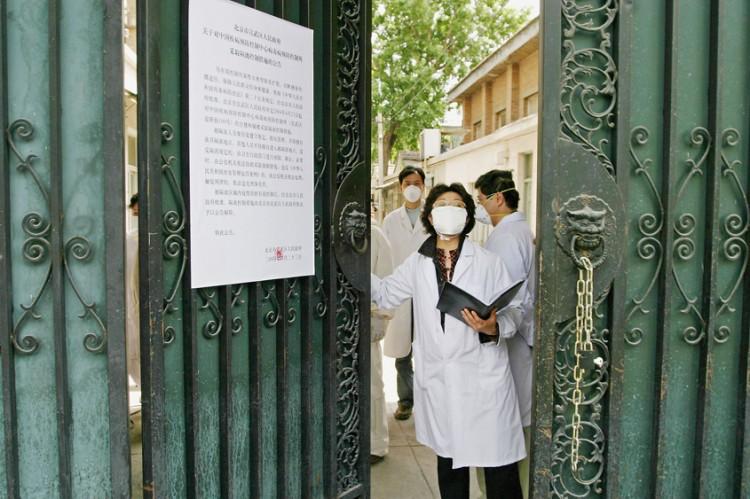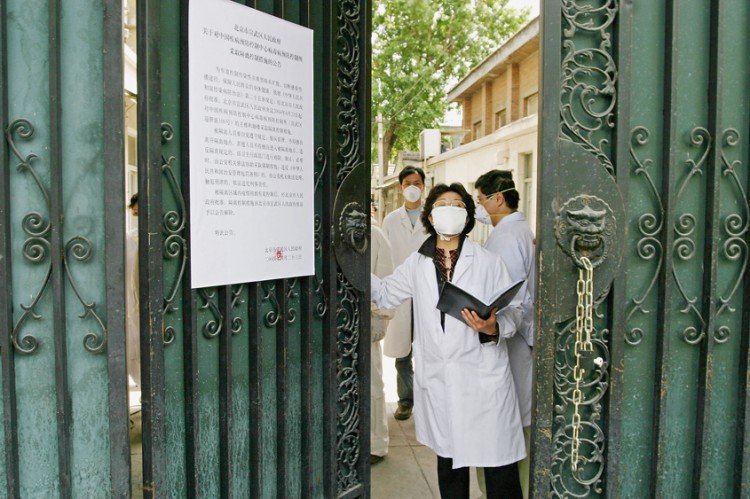An outbreak of brucellosis amongst populations of livestock all over China is now rapidly developing, with at least 350 million Chinese at risk of being infected by the disease. Brucellosis infects cattle, pigs and sheep, and can be transmitted to humans through the consumption of dairy products and exposure to infected animals.
“This epidemic is the most serious one ever recorded to date.” said Wang Dali, a specialist from the Brucellosis Research Center in the Chinese Center for Disease Control and Prevention (CCDC).
Wang was rushed to Hunan Province to deal with cases of brucellosis on May 14, according to the Caixin’s New Century Weekly magazine. He normally receives such calls only after an epidemic has turned especially serious.
According to the magazine, since 2000, the spread of zoonoses (diseases that can be transmitted from animals to humans) such as SARS, rabies, schistosomiasis, and avian flu has been steadily growing within China. If effective measures are not taken to control the diseases within animal populations now, then an explosive epidemic outbreak is almost certain to happen, said the report.
Brucellosis was rampant in China in the 1950s, but later died down. However, the disease has rebounded since the 1990s. The number of brucellosis cases in China has increased 30-fold over the past decade, according to officially reported numbers.
Spreading From the North to the South
In Sept. 2011, the Northeast Agricultural University in the northeastern city of Harbin, Heilongjiang Province, best known for animal disease prevention research, suddenly announced that 28 students and faculty members had contracted brucellosis due to use of an un-quarantined lamb in their experiments.
A month later, China Youth Daily reported on Nov. 2 that hundreds of inspectors had contracted brucellosis while inspecting cows and sheep in Inner Mongolia.
On Nov. 11, 2011, Chinese newspaper Legal Weekly reported that 10 workers and about 600 dairy cows belonging to Gannan Flying Crane Dairy Products (Gannan Feihe) had contracted brucellosis. But the Heilongjiang-based producer of milk powder later denied having any cases of infections.
A college graduate told Legal Weekly that he had contracted brucellosis after working at a Gannan Feihe farm for about 4 months. Due to the fact that brucellosis affects the reproductive organs, his girlfriend broke up with him as well.
Brucellosis was historically only found in northern China, but the disease has now spread to every other province in China except for Hainan, possibly owing to the fact that it is naturally quarantined as an island.
According to an official report from the Chinese authorities, there were over 38,000 brucellosis patients in China in 2011. However, a veteran researcher of brucellosis told the New Century Weekly that the Chinese Ministry of Agriculture and Ministry of Health did a joint investigation into the disease in Hebei, Shanxi and several other regions in 2007. They found that on average, 45 percent of brucellosis cases were not reported, with the number of unreported cases going up to 90 percent in some areas.
A team of researchers from Liaoning Medical University wrote in the Feb. 2011 issue of the Chinese Journal of Control of Endemic Diseases that 350 million people in China were at risk of contracting brucellosis, with the disease being found in over 1200 Chinese counties and infecting some 300,000-500,000 people.
The growing number of human brucellosis cases indicates that the number of infected cases amongst livestock has been growing as well. Since no safe and effective human vaccine is currently available, the only effective means of controlling the spread of the disease is the culling of all infected livestock.
In most countries, any animal found to be infected with brucellosis is immediately killed and properly disposed of, but that is not the case in China. This is mainly due to the insufficient level of compensation paid to farmers who cull their the infected animals.
A scholar studying brucellosis told New Century Weekly, a cow is compensated for 5000 to 8000 yuan (US$786 to $1,257), and a sheep with 100 to 500 yuan ($16 to $79), slightly below the market value (10,000 yuan for a cow and 400 yuan for a sheep). “So farmers are unwilling to kill.” This has resulted in the infected animals being quietly traded into markets, he said.
Symptoms of brucellosis include fevers, sweating, weakness, anemia, headaches, depression and muscular and bodily pain. The disease can last from a few weeks to many months or even years, and requires a very long period of treatment. The disease can be transmitted between humans through sexual contact and from mother to child during childbirth, but such cases are rare.
Read original Chinese article.
The Epoch Times publishes in 35 countries and in 19 languages. Subscribe to our e-newsletter.






